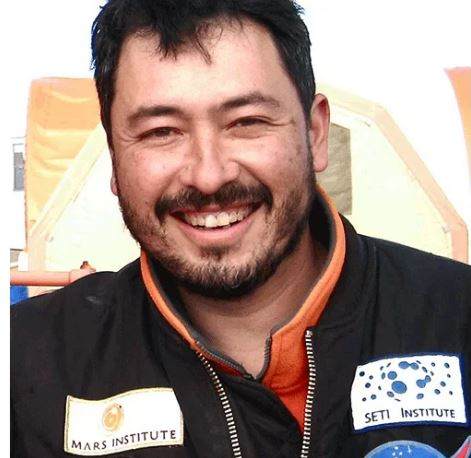SETI Institute and Mars Institute Planetary Scientist and Chief of the NASA Haughton-Mars Project Will Receive National Space Society’s Space Pioneer Award
The National Space Society is proud to present noted planetary scientist, explorer, and Mars specialist Dr. Pascal Lee at its annual ISDC®, the International Space Development Conference®, which will be held on May 25-28, 2023 in Frisco, Texas, a suburb of Dallas. Dr. Lee will be receiving the coveted NSS Space Pioneer Award for his trailblazing work in Mars science and exploration.
Dr. Lee is a Planetary Scientist at the SETI institute, Co-founder and Chairman of the Mars Institute, and Director of the Haughton-Mars Project (HMP) at the NASA Ames Research Center. The HMP is a Moon and Mars analog field research project and base on Devon Island in the Arctic.
“Pascal is an inveterate explorer, whether charting new trails on Devon Island in the High Arctic or navigating countless images of Mars taken by NASA’s orbiters,” said Rod Pyle, Editor-in-Chief of the NSS premiere print quarterly, Ad Astra magazine. “His recent discovery of near-equatorial glacier remnants on Mars is a revelation, and this is just one small part of his ongoing efforts to help humanity reach the Red Planet.”
Lee holds an ME in geology and geophysics from the University of Paris and a PhD in astronomy and space sciences from Cornell University. He wintered over for 402 days at the Dumont d’Urville station in Antarctica, and spent five summers doing field research on that continent. He has also led over 30 expeditions to the Arctic to study Martian environmental and geological conditions, and test future technologies for Mars exploration.
Lee’s research interests include the history of water on Mars and planning the future human exploration of the planet. His first book Mission: Mars won the 2015 Prize for Excellence in Children’s Science Books from the American Association for the Advancement of Science. Research interests include asteroids, impact craters, the Moon, and Mars, in particular the history of water on Mars. Based on his fieldwork in Earth’s polar regions, Lee was first to propose the Cold Early Mars model which suggests, counter to conventional wisdom, that Mars was climatically cold throughout its history, rather than ever “warm and wet.”
Lee has also contributed to the design, development, and field testing of many advanced concepts and technologies for future Mars exploration, from robotic rovers, helicopters, and hoppers, to spacesuits, crewed rovers – unpressurized and pressurized – and planetary habitats. He was scientist-pilot for the first field test of NASA’s Lunar Electric Rover, and led the record-breaking Northwest Passage Drive Expedition across the Arctic to study requirements of future long-range pressurized rover traverses. Lee is also an FAA-certified helicopter commercial pilot and flight instructor.
Most recently, Lee and a team of research associates discovered a “relict” glacier near the Martian equator, the first such landform to be noted in the equatorial region. “If this relict glacier still has water ice, or is indicative of other formations near the Martian equator that do, this finding could be vitally important for future human missions to Mars,” Lee notes. “Mars’ equatorial regions present us with some of the most scientifically exciting and spectacular parts of the planet. They are also easier to reach and present warmer temperatures. If there’s accessible water ice there—a critical resource for future explorers—it could make exploring Mars much easier for humans.” Lee will discuss this finding in his presentation at ISDC 2023.
The recent paper on this discovery joins hundreds of others he has authored or co-authored. Lee is also the recipient of research grants from NASA, the National Research Council, the Canadian Space Agency, and the National Geographic Society’s Committee for Research & Exploration. Lee is an advisor to NASA.
Last but not least, Lee paints space art and is an artist member of the International Association of Astronomical Artists. His oil paintings of Mars exploration and of his other journeys through spacetime are collected worldwide.
Join Dr. Lee and dozens of other top space professionals at the International Space Development Conference in Frisco, Texas, in May 2023. The conference will be held at the Embassy Suites by Hilton Dallas Frisco Hotel & Convention Center near Dallas-Fort Worth. More information can be found at the ISDC website.



















